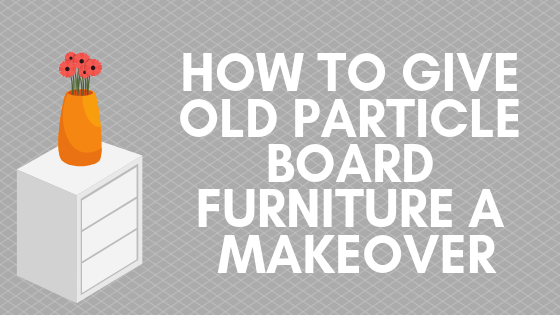Particle board furniture is a great choice when you have a tight budget, and there are actually some really cool, budget-friendly options out there these days. But as we all know, particle board doesn’t always withstand the test of time. It peels, chips, and warps much more easily than solid wood furniture does. If you have some fixer-upper particle board pieces that are in dire need of a makeover, we’re here to help! Follow these easy step-by-step instructions, and you’ll be showing off your refurbished, semi-custom particle board pieces in no time flat.
What You’ll Need
Sanding Block
Primer
Paint
Paintbrush
Paint Roller and Tray
Wood Filler
Optional: stencils, wallpaper, paper for decoupaging
Prep for Painting
First, repair any chips or cracks with wood putty and a putty knife. If you have spots that have bubbled up due to water damage, you can remove them with a sharp razor blade and fill with wood putty. You’ll need to let the wood putty or filler dry overnight, so make sure to do it ahead of time. Once it’s completely dry, sand the area with a high grit sandpaper until it’s smooth. Note: be careful about the cost vs. worth ratio here. If a piece is badly damaged, repairing it could actually cost more than simply replacing it.
Sand the Entire Surface
Once the repairs have been made and you have an even surface, it’s time to sand the entire piece. Don’t skip this step. It might not seem important, but the glossy finish of particle board furniture won’t allow the paint to adhere well, and you’ll find your brand new paint job chipping in no time at all. Using a high grit sandpaper, sand the entire surface, using just enough pressure to remove any old finish. Be careful not to sand too hard on the edges, or you could chip the laminate and have to start over again.
Start with a Coat of Primer
We know you want to get straight to the actual painting and start the transformation, but this is another step you really shouldn’t skip. You’ll thank us in the end when you don’t have to add multiple extra coats of paint. First, choose the right primer. If you’re painting over dark particle board, go with a gray primer. If the piece has a lighter finish, go ahead and use a white primer. Or if you already have white primer on hand and want to paint over a dark finish, mix some of the paint color you’ll be using in with the primer. Go ahead and add a coat of primer with a paintbrush, making sure to get every nook and cranny, then let dry completely.
Sand the Primed Surface
Yes, you do need to sand the surface again. When it comes to covering particle board, you want the paint layers to be thin. If they go on too thick, it’s more likely that the paint will scuff or chip when items are placed on top later. Just give the primer coat a light sanding so the paint will go on smoothly and adhere well to the surface. Remove any dust with a lint-free rag after sanding.
Roll on the Paint
Finally, the fun part! Use a roller for painting your piece. This will ensure that the top coat goes on evenly without any brushstrokes showing through (unless you like the look of brushstrokes!), but you’ll need a brush to get into corners and other awkward spots. One coat might be enough to cover as long as you primed properly, but if not, make sure to let the first coat dry completely before adding another one.
Finish Your Piece
Once you’re satisfied with the paint job and it’s completely dry, you might want to make additional changes to enhance your piece of furniture. Add some cool new hardware to drawers or doors. If your project is a bookshelf, think about adding some colorful wallpaper or fabric to the back or the shelves for a touch of interest. Stencil a pattern on top of the last coat of paint. Do whatever makes you happy, and enjoy your new piece of particle board furniture!







